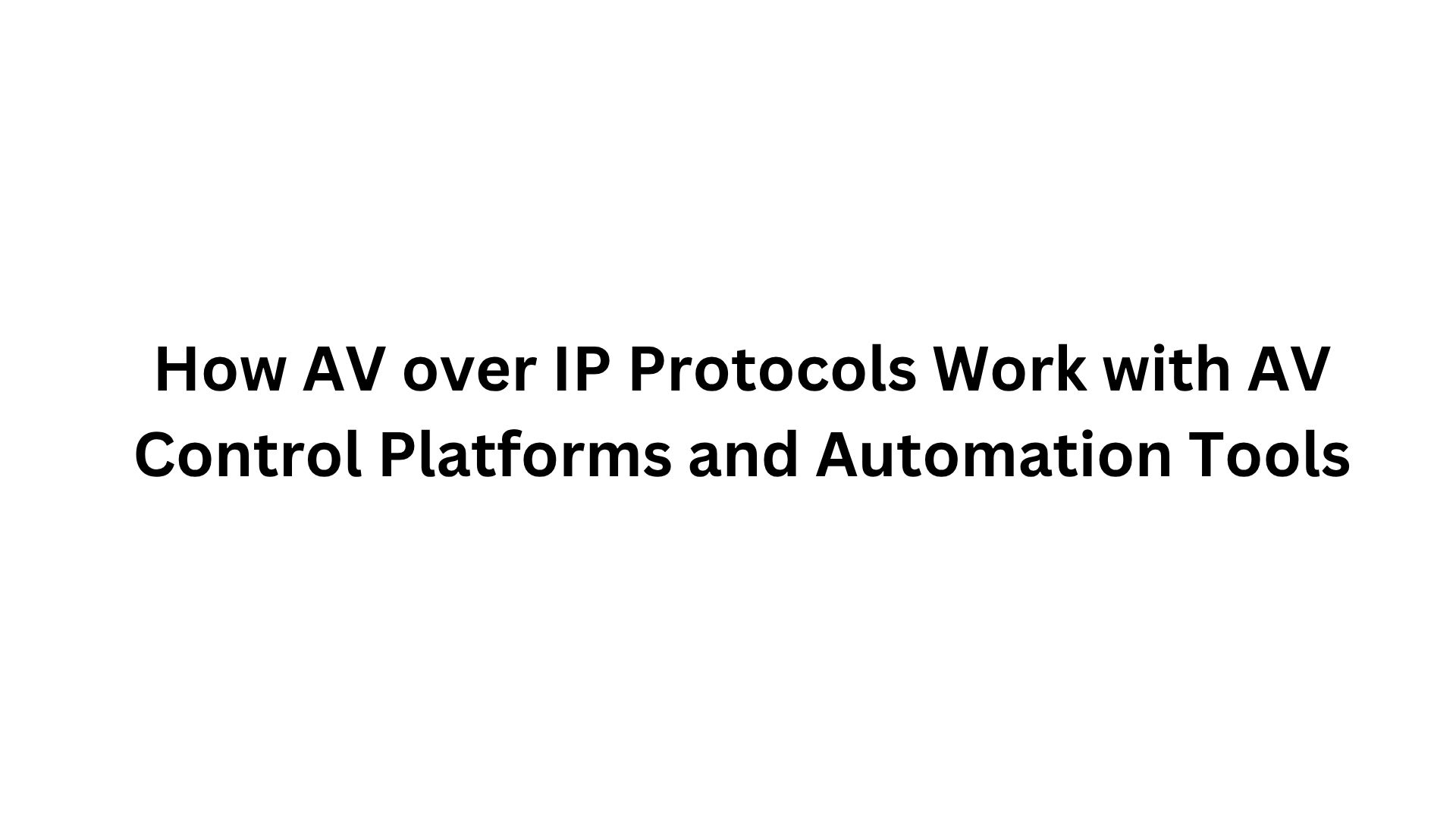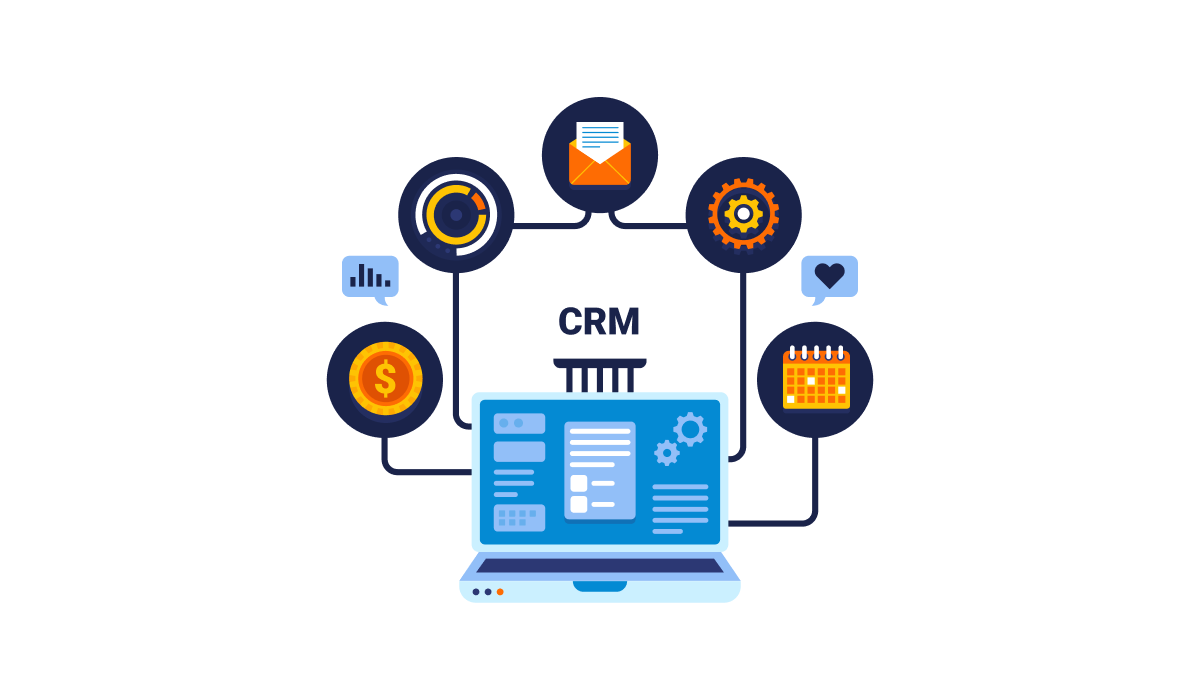As the audio visual industry embraces the power of networked systems, AV over IP has become the foundation of modern AV design. AV over IP allows integrators to distribute high-quality audio, video, and control signals over standard Ethernet networks rather than relying on traditional point-to-point cabling. At the heart of this technology are AV over IP protocols that define how data is packaged, transmitted, and decoded across the network. But these protocols do not operate in isolation. They work in harmony with AV control platforms and automation tools to deliver seamless user experiences, intelligent room operations, and simplified system management. In this blog, we explore how AV over IP protocols integrate with control and automation platforms and what this means for integrators and end users.
The Role of AV over IP Protocols in Networked Systems
AV over IP protocols are the rules that govern how audio, video, and control data move through a network. They ensure that signals are encoded, transmitted, and decoded reliably and efficiently. Examples of AV over IP protocols include SDVoE, Dante AV, NDI, and H.264. Each has its own strengths related to latency, bandwidth efficiency, and image quality.
These protocols enable the flexibility and scalability that make AV over IP systems so powerful. However, they focus on transporting data, not on managing user interactions or automating room functions. That is where AV control platforms and automation tools come in.
What Are AV Control Platforms and Automation Tools
AV control platforms are systems that allow users to interact with and manage AV equipment. These platforms include touch panels, keypads, web interfaces, and mobile apps. They provide a unified way to control devices such as displays, projectors, speakers, lights, shades, and more.
Automation tools take this one step further. They allow systems to respond automatically to certain conditions or schedules. For example, a meeting room may power on displays and set volume levels when a user enters the room, or a lecture hall may lower shades and dim lights when a presentation starts.
Together, control platforms and automation tools simplify AV system operation, reduce human error, and enhance the user experience.
How AV over IP Protocols and Control Platforms Work Together
AV over IP protocols and control platforms are designed to complement each other. While the protocols handle the transmission of audio and video data, the control platform manages the devices involved in that transmission and coordinates actions across the system.
Here is how they work together in practice:
1. Signal Routing and Switching
In a traditional AV system, a hardware matrix switcher might route video from a source to a display. In an AV over IP system, the network performs this function. The AV control platform sends commands to encoders, decoders, and network switches to direct traffic as needed. The platform may use APIs or drivers provided by the AV over IP equipment manufacturer to control routing in real time.
For example, when a user selects a source on a touch panel, the control platform communicates with the AV over IP encoders and decoders to establish the correct data streams.
2. Synchronization of Devices
AV control platforms ensure that all elements of the AV system work in sync. When AV over IP protocols deliver a video stream to a display, the control platform can simultaneously manage other devices, such as turning on the display, setting the correct input, adjusting volume on speakers, or dimming room lights. This coordination creates a polished, professional experience for users.
3. Automation of Repetitive Tasks
Automation tools take advantage of AV over IP’s flexibility to streamline repetitive actions. A control platform can be programmed to automatically route content to specific displays at certain times of day, switch inputs when a new device is connected, or shut down the AV system at the end of business hours. These actions can all happen while AV over IP protocols handle the seamless delivery of data.
4. Monitoring and Diagnostics
Modern AV control platforms often include monitoring features that track system status and performance. AV over IP equipment can report back metrics such as network usage, signal integrity, and device health. The control platform can display this information on a dashboard and even generate alerts if something goes wrong, helping integrators and IT teams address issues proactively.
Examples of AV Control Platforms Supporting AV over IP
Several well-known control systems integrate easily with AV over IP solutions:
-
Crestron and AMX platforms offer native support for popular AV over IP protocols and provide powerful automation and monitoring tools.
-
Extron control systems can manage AV over IP routing and device control through a unified interface.
-
Q-SYS integrates audio, video, and control into a single ecosystem, making it easy to manage AV over IP systems alongside other room technologies.
Key Considerations When Integrating AV over IP and Control Platforms
To ensure a successful integration, consider these factors:
1. Compatibility
Make sure your chosen control platform supports the specific AV over IP protocols and devices in your system. Check for certified drivers, APIs, or modules that enable smooth communication.
2. Network Design
AV over IP and control traffic often share the same network. It is important to plan VLANs, QoS settings, and bandwidth requirements carefully to avoid congestion and ensure reliable performance.
3. Security
Since AV over IP systems and control platforms operate over networks, security is critical. Implement access controls, encryption where supported, and regular updates to protect against vulnerabilities.
4. User Interface Design
Design control interfaces that are intuitive and easy to use. The power of AV over IP and automation can only be fully realized if users can easily interact with the system.
The Future of AV over IP and Control Integration
Looking ahead, the integration of AV over IP protocols with control platforms will become even tighter. Trends to watch include:
-
AI-driven automation. Systems that learn user preferences and adjust settings automatically.
-
Cloud-based control. More platforms will offer cloud monitoring and management for AV over IP systems across multiple sites.
-
Deeper IT integration. AV control and automation will become standard parts of enterprise IT frameworks, supported by unified management tools.
Conclusion
AV over IP protocols provide the foundation for flexible, scalable networked AV systems. When combined with powerful control platforms and automation tools, they enable integrators to deliver sophisticated solutions that are easy to use and manage. By understanding how AV over IP protocols work with control systems, integrators can create installations that not only meet technical requirements but also deliver outstanding user experiences. As AV and IT continue to merge, this integration will be key to the success of future AV deployments.
Read more: https://guest-post.org/how-network-protocols-like-igmp-and-vlans-enable-av-over-ip-efficiency/



